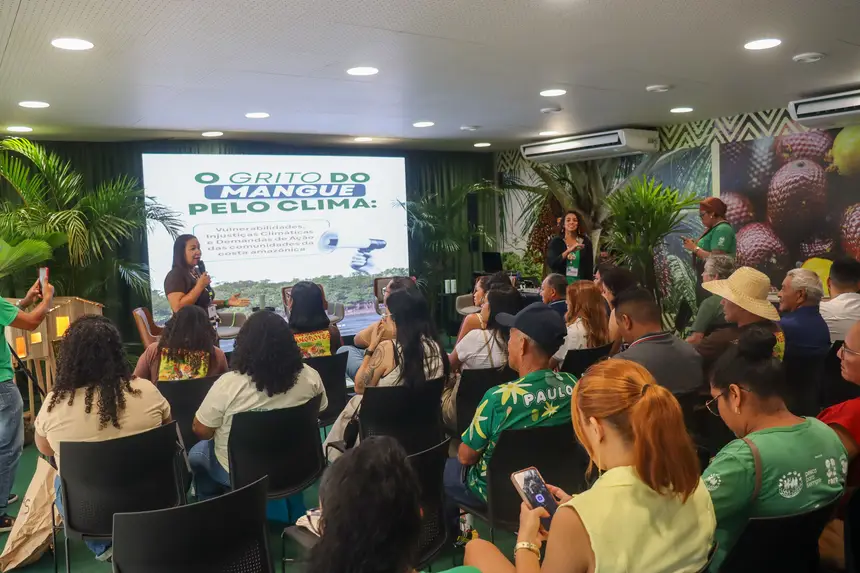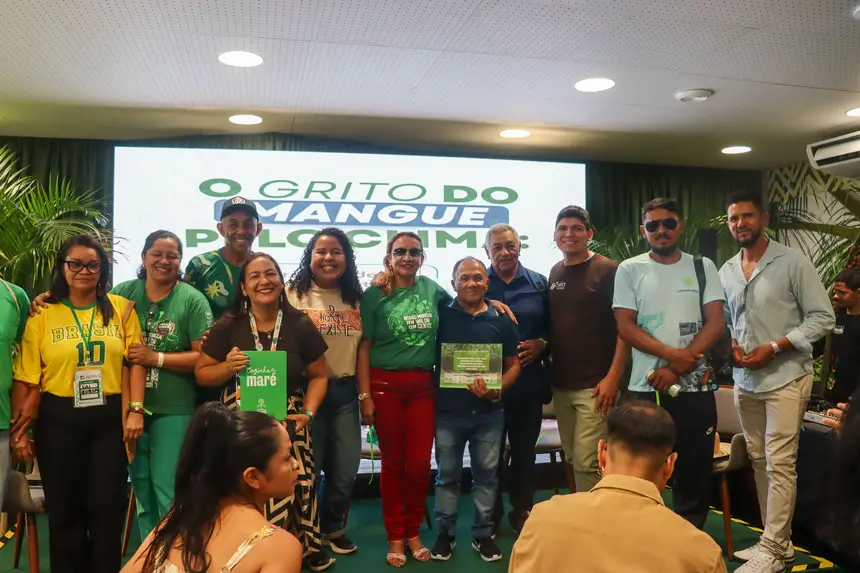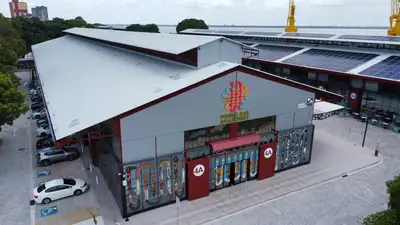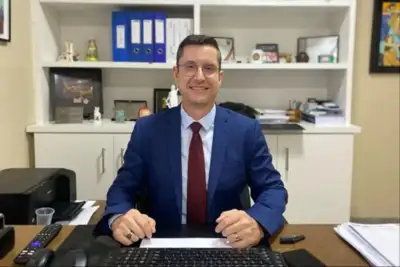The Cry of the Mangroves Echoes at COP30 and Reinforces the Desire for Climate Justice
At the Pará Pavilion, leaders from coastal territories, researchers, and institutional representatives emphasize that the protection of mangroves depends on the recognition of the populations that live in and care for this ecosystem.

The strength of the Amazonian territories marked the panel "Our Mangrove Has Value with People – Importance of Amazonian Mangroves and Communities in Facing the Climate Crisis," held on Saturday (15) in the Miritizeiro Room, in the Green Zone – Pará Pavilion, during COP30. The meeting brought together community leaders, researchers, and representatives of organizations working to defend mangroves, highlighting the urgency of public policies and social recognition for those living in these areas.
Present at the panel as an audience member, the Deputy Secretary of Environmental Management and Regularity of Semas (SAGRA), Rodolpho Zahluth Bastos, emphasized that mangroves are one of the most strategic ecosystems in the Amazon for climate mitigation and food security, reinforcing the commitment of the Government of Pará to conservation actions allied with community leadership.
"The impact we expect from the preservation of mangroves involves socio-productive inclusion, conservation of mangroves, value addition in marketing, and support for the productive chain present in this ecosystem. It is an initiative that aims to reinforce, recognize, and value traditional practices and knowledge, in addition to social technology for managing natural resources, aligning with public policies for coastal, environmental, and territorial management," emphasizes the deputy secretary.

Communities as Guardians of the Mangrove
The director of management and development at the Mamirauá Institute, Dávila Corrêa, opened the debate by reminding that the defense of mangroves arises from the daily experiences of coastal populations.
"Our cry speaks for all mangroves. We need to talk about all the families that live here. We are trying to preserve what we have and take care of it more and more, because those who are most vulnerable are the families that depend on the mangrove," said Dávila.
The fight for climate justice arises from a reality marked by transformations in ways of life, the return of nature, variations in tides, and changes in the crab protection periods, reinforcing the struggle for climate justice.
Dávila also emphasized the role of women's and youth networks in driving transformations: "It is very important to see this group of women, youth, and grassroots leaders representing our territories. The Cuíra Youth Network is growing in the mangroves, and the Mothers of the Mangrove Network brings together over 800 women and 48 groups in the communities, doing a beautiful job of organization and strengthening."

Mangrove is Forest, is Life, and Depends on Public Policies
Representing the Extractive Reserve of Soure, Paulo Torres reinforced that mangroves need to be recognized as an essential part of the Amazonian forests. "Our Mangrove has value. I participated in an event where they said that Mangrove was not a forest — this shows the misinformation. The Mangrove is indeed a forest and needs to be preserved and conserved. And it only stands if its base, which is us, is also standing."
Paulo reminded that the lives of thousands of families depend directly on this ecosystem. "The Mangrove exists because there are people who take care of it, and our people exist because there is a Mangrove that needs to be preserved, seen, and continues to be abundant."
Social Technologies and Grassroots Leadership
The coordinator of the Mothers of the Mangrove Network, Renilde Piedade, moved the audience by reinforcing that the center of climate transformation is in the community base.
"It is very symbolic to be on the margin — but on the positive margin — because the leadership is from the population that lives in these spaces. You are a great inspiring movement in Brazil. The strength comes from the communities, the bases, and the territories that sustain the Amazon."

Traditional communities produce vital social technologies for climate adaptation. Social technology is the technology that arises from the base, with the people, with the territories, and with nature at the center of the solution. The Cry of the Mangrove is an example of this: a solution created by the territories themselves.
"Partner organizations walk alongside communities, not above them. We come with the spirit of listening to what the territories are already building and walking together with the productive chains and management practices. It is a strong, beautiful, and essential movement for Brazil," concluded Renilde.
March Cry of the Mangroves
The march was a symbolic moment, near the monument of the Bank of Peace, inaugurated last Monday (10), located on the ground floor of the Pará Pavilion in the Green Zone, delivered as a symbolic legacy of sustainability.
The space will remain as a permanent legacy for Belém, the host city of COP30, inviting the population to think together about the future of the planet as transformative agents of the environment. The representativeness of the space supports the debates and the "cry" of the people who have their lives in the mangrove.
The Secretary of Environment, Climate, and Sustainability (SEMAS) works to strengthen environmental policies that recognize the value of coastal ecosystems and extractive communities. The integration between conservation and climate justice necessarily involves strengthening traditional populations as protagonists in the management of territory, preservation, perpetuation, and maintenance of their roots.
Text by Lucas Maciel / Ascom Semas









